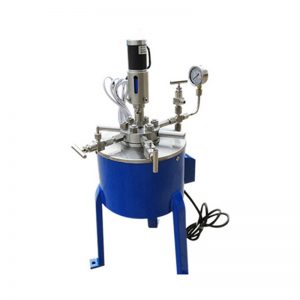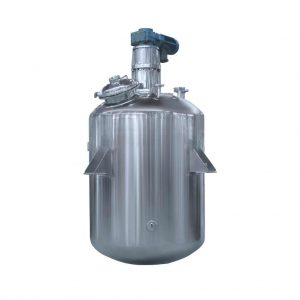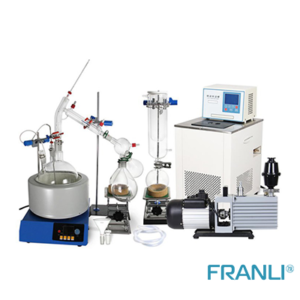Home » Glass Reactors and Selection of Stirring Blades
Glass Reactors and Selection of Stirring Blades
Glass Reactor
Glass reactors, also referred to as glass reaction vessels, are vessels made from high-quality borosilicate glass material. They are designed to withstand high temperatures and corrosive substances, making them ideal for a wide range of chemical reactions.
Details of Glass Reactor
- Using the latest reaction technology
- It has high temperature resistance, corrosion resistance, and high durability.
- Heating methods include steam, electric heater, high temperature heat transfer oil
- Using jacket, half pipe, fan coil, and other structures
Application: Chemicals, pharmaceuticals, dyes, pesticides, petroleum, food additives, etc.
In the field of chemical engineering, glass reactors play a vital role in conducting various chemical reactions and experiments. These reactors, commonly known as glass reaction vessels, provide a transparent and corrosion-resistant environment for the synthesis of chemicals.
Features and Advantages of Glass Reactors
– Excellent thermal stability: Glass reactors can withstand a wide range of temperatures, facilitating reactions requiring precise temperature control.
– Superior chemical resistance: Borosilicate glass is highly resistant to corrosion, allowing for compatibility with a broad range of chemicals.
– Transparency: The transparent nature of glass reactors enables real-time observation of reactions, enhancing process monitoring and control.
– Easy maintenance and cleaning: Glass reactors are easy to clean and maintain, ensuring batch-to-batch consistency and preventing cross-contamination.
Applications of Glass Reactors
Glass reactors find applications in various industries, including pharmaceuticals, chemicals, food processing, and research laboratories. They are commonly used for processes such as synthesis, crystallization, polymerization, distillation, and mixing. The versatility of glass reactors makes them an indispensable tool for chemical engineers and scientists.
Selecting Suitable Stirring Blades
1. Importance of Stirring Blades in Glass Reactors
Stirring blades, also known as impellers, are crucial components of glass reactors. They facilitate the mixing and dispersion of reactants, ensuring uniformity and efficiency in chemical reactions. Selecting the appropriate stirring blade is vital for achieving desired reaction outcomes.
2. Factors to Consider when Choosing Stirring Blades(Reactant Properties)
– Viscosity: High-viscosity reactants require robust stirring blades capable of providing sufficient shear force to achieve effective mixing.
– Solid Suspension: If solid particles are present in the reaction, the stirring blades should be capable of maintaining uniform suspension and preventing sedimentation.
– Gas-Liquid Mixing: Reactants involving gas-liquid reactions may require specific stirring blade designs to enhance mass transfer and reaction kinetics.
3. Process Considerations:
– Agitation Speed: The stirring blade should be able to achieve the desired agitation speed for optimal mixing and reaction kinetics.
– Reaction Scale: Large-scale reactions may require different stirring blade configurations compared to laboratory-scale experiments.
– Heat Transfer: Some stirring blade designs promote better heat transfer, enhancing temperature control in exothermic reactions.
4. Equipment Compatibility:
– Mechanism Design: The chosen stirring blade must be compatible with the glass reactor’s mechanical design, ensuring proper fitment and operation.
– Material Compatibility: Consider the compatibility of the stirring blade material with reactants, ensuring resistance to corrosion and degradation.
Types of stirring paddles for glass reactors
- Anchor-type mixing paddle:
The anchor-type mixing paddle has a simple structure and is suitable for media with high viscosity, such as colloids, pastes, etc. It is characterized by high stirring intensity and the ability to fully stir viscous media evenly.
- Propeller:
The propeller is a common type of stirring paddle suitable for mixing liquid media. Its blades are spiral in shape and can generate strong stirring and shearing forces to mix the reaction system quickly and evenly.
- Paddle-type mixing paddle:
The blades of the paddle-type mixing paddle are designed in an elliptical or fan-shaped shape and are suitable for high shear and high-speed mixing requirements. Due to the special design of the blade shape, it can generate a strong stirring force, and improve the reaction speed and the mixing effect of the reaction system.
- Turbine propeller:
A turbine propeller is a type of stirring paddle with strong stirring force, suitable for high viscosity and high-density reaction media. Its blade structure is in the shape of a turbine, which can effectively stir the reaction liquid evenly and improve reaction efficiency.
- High-shear mixing paddle:
A high-shear mixing paddle is mainly used for reaction processes that require strong dispersion and shearing. Its unique blade design can disperse the reaction system evenly and provide strong shear force, which is suitable for uniform dispersion of liquids and homogeneous dispersion of solids.
According to the characteristics of the reaction system and the requirements of the experiment, choosing the appropriate stirring paddle type is very important for the research and production process of the reactor. Different stirring paddle types have their specific stirring effects and ranges. A reasonable selection of stirring paddle types can improve the efficiency and quality of the reaction, and improve the accuracy and reliability of experimental results.
Welcome to send inquiry to us and let’s make a win win business together !
Guidelines For Chemical Reactor
FRANLI has several complete chemical reactor production lines. Our chemical reactor adopts the latest infinitely variable speed reducer device, the sealing device can be a mechanical seal, and the heating and cooling can adopt the structure of a jacket, half pipe, fan coil, etc., The heating methods include steam, electric heater, and high-temperature heat transfer oil to achieve different safe processing environments such as acid resistance, heat resistance, wear resistance, and corrosion resistance.

Laboratory Reactor: Guide to Stirring System
The laboratory reactor is composed of a pot body, a pot cover, an agitator, a jacket, a support and transmission device, a shaft seal device, etc.

Overview of Laboratory Reactor
Laboratory reactors, also known as lab reactors, are essential tools in scientific research, product development, and process optimization. These reactors provide a controlled environment for conducting chemical reactions, mixing, dispersing, and homogenizing processes.

What is A Stainless Steel Reactor?
Stainless steel reactors are essential equipment in various industries, including chemical, pharmaceutical, biotechnology, and food processing.

Glass Reactor & Chemical Equipment
Glass reactors are essential equipment widely used in the chemical, pharmaceutical, and biotechnology industries. They come in various types, suitable for different applications.

Operating Guide for Laboratory Reactors
Laboratory reactors play a crucial role in chemical research and development. Understanding the proper operating procedures is essential to ensure accurate results and maintain a safe working environment.

Glass Reactors and Selection of Stirring Blades
Glass reactors, also referred to as glass reaction vessels, are vessels made from high-quality borosilicate glass material.

